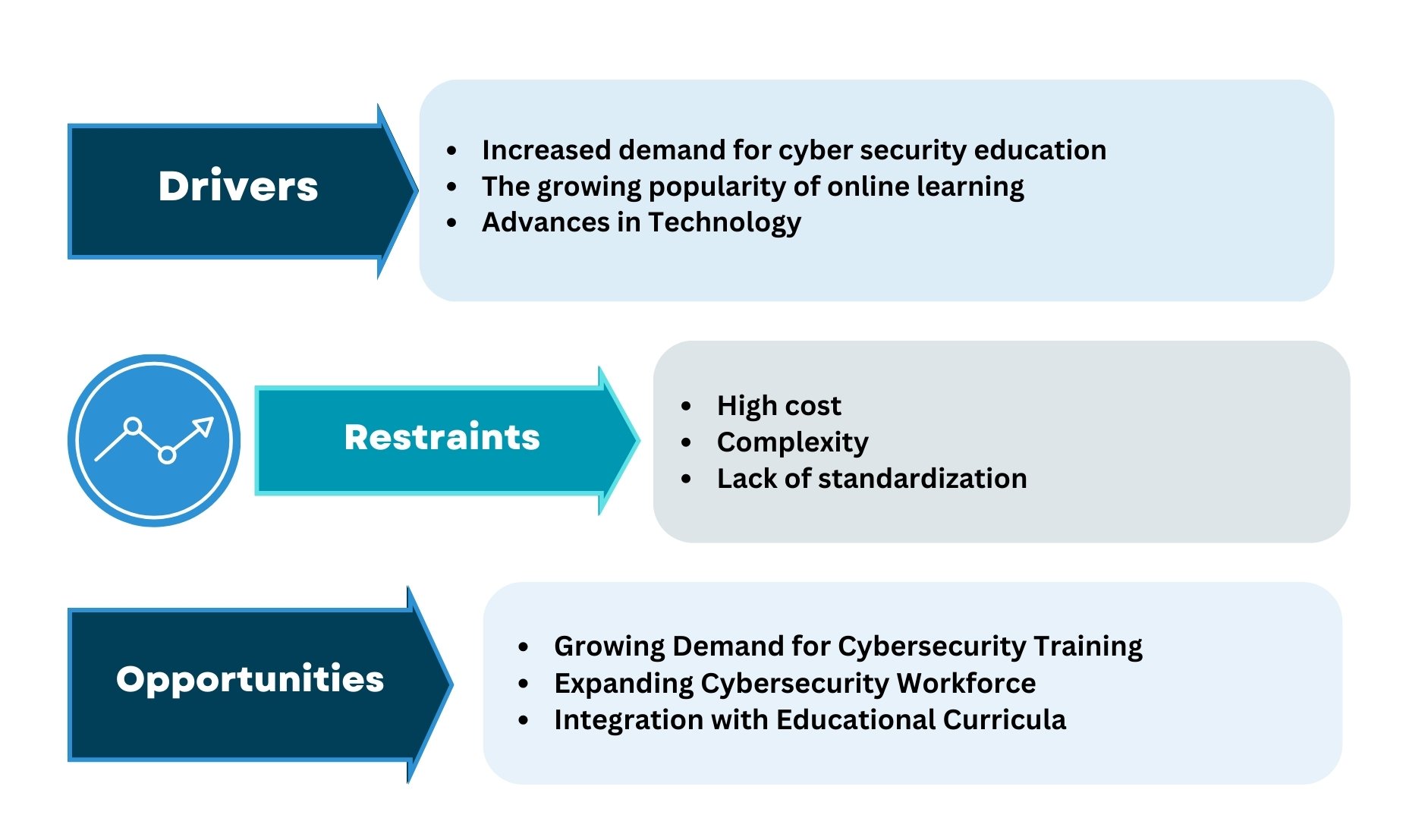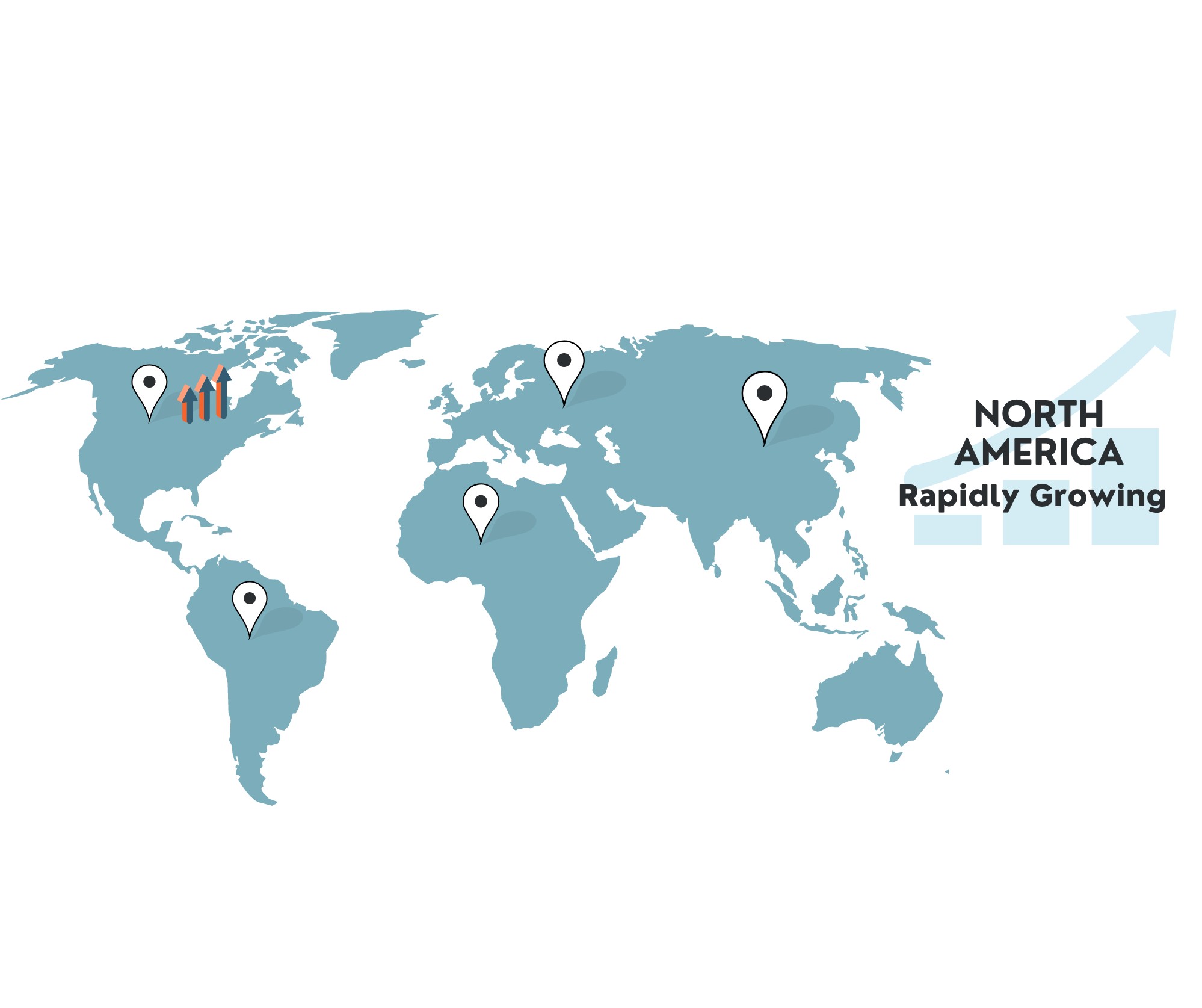Description
The Global Cyber Range for Education Market size was USD 88.23 million in 2022 and it is expected to grow to USD 225.58 million in 2030 with a CAGR of 11.65% in the 2023-2030 period.
Global Cyber Range for Education Market: Overview
The global cyber range for education market was experiencing significant growth due to the increasing importance of cybersecurity training and skill development. Cyber ranges are virtual environments that simulate real-world cyber-attacks and incidents, providing hands-on training and practice for cybersecurity professionals and students. They offer a safe and controlled space to develop and test cybersecurity skills, improve incident response capabilities, and enhance overall cyber resilience. The rise in cyber threats, data breaches, and cyber-attacks on organizations across various industries has highlighted the critical need for skilled cybersecurity professionals. As a result, educational institutions and businesses have increasingly turned to cyber ranges to train and upskill their students and employees. Traditional cybersecurity training often involves theoretical concepts, but practical, hands-on experience is essential for developing effective cybersecurity skills. Cyber ranges offer interactive and realistic training scenarios, allowing learners to respond to simulated attacks and assess vulnerabilities in a controlled environment. The global shortage of cybersecurity professionals has become a major concern for organizations. Cyber ranges address this skill gap by providing a platform for individuals to gain practical experience and become job-ready in the cybersecurity domain.
Global Cyber Range for Education Market: Covid-19 Impact
The COVID-19 pandemic had a significant impact on various industries, including the global cyber range for the education market. The pandemic led to widespread disruptions in traditional education and training methods, which accelerated the adoption of online learning and cybersecurity training platforms, including cyber ranges. Please note that the situation might have evolved since then, and it’s essential to consider more recent data for the most up-to-date insights. The shift to remote work and online education during the pandemic led to a surge in demand for virtual training and learning platforms. Educational institutions, businesses, and government organizations turned to cyber ranges to deliver cybersecurity training remotely.
With the pandemic causing economic uncertainties and job losses, many individuals sought opportunities to upskill or reskill in high-demand fields like cybersecurity. Cyber ranges provided a practical and accessible platform for individuals to enhance their cybersecurity skills from home. The pandemic created new opportunities for cybercriminals, leading to an increase in cyber-attacks and scams. This heightened the need for cybersecurity training and incident response preparedness, driving the demand for cyber ranges. Educational institutions and organizations faced challenges in conducting in-person cybersecurity training sessions. Cyber ranges allowed them to continue training and certification programs virtually, ensuring the continuity of skill development initiatives. Many cybersecurity competitions and events moved to virtual formats during the pandemic. Cyber ranges played a vital role in providing the infrastructure for hosting these events, allowing participants to compete remotely.
Global Cyber Range for Education Market: Growth Drivers

-
Increased demand for cyber security education:
The increasing number of cyber-attacks is driving the demand for cyber security education. Businesses and organizations need to ensure that their employees are trained in cyber security, and cyber ranges can provide a safe and realistic environment for employees to learn about cyber security threats and how to defend against them.
-
The growing popularity of online learning:
Online learning is becoming increasingly popular, and this is also driving the growth of the cyber range for the education market. Cyber ranges can be delivered online, which makes them accessible to a wider range of learners.
-
Advances in technology:
Advances in technology are also driving the growth of the cyber range for the education market. New technologies, such as virtual reality and artificial intelligence, are being used to create more realistic and immersive cyber ranges.
-
Government initiatives:
Governments around the world are investing in cyber security education, and this is also driving the growth of the cyber range for the education market. Governments are providing funding for cyber ranges, and they are also mandating that businesses and organizations provide cyber security training for their employees.
-
Demand from academia:
Cyber ranges are also being used in academia to train students in cyber security. Cyber ranges can provide a safe and realistic environment for students to learn about cyber security threats and how to defend against them.
Global Cyber Range for Education Market: Restraining Factors
-
High cost:
Cyber ranges can be expensive to develop and maintain. This can be a restraint for some businesses and organizations, especially those with limited budgets.
-
Complexity:
Cyber ranges can be complex to use and manage. This can be a restraint for some businesses and organizations, especially those with limited IT resources.
-
Lack of standardization:
There is no single standard for cyber ranges. This can make it difficult for businesses and organizations to compare different cyber ranges and choose the right one for their needs.
-
Lack of awareness:
There is still a lack of awareness about cyber ranges among businesses and organizations. This can be a restraint for the growth of the market, as businesses and organizations may not be aware of the benefits of using cyber ranges.
Global Cyber Range for Education Market: Opportunity Factors
-
The increasing sophistication of cyber-attacks:
Cyber-attacks are becoming increasingly sophisticated, and this is creating new opportunities for cyber ranges. Cyber ranges can be used to simulate real-world attacks, which can help organizations to test their defenses and to identify vulnerabilities.
-
The need for continuous training:
Cybersecurity is a constantly evolving field, and organizations need to provide their employees with continuous training. Cyber ranges can be used to provide employees with realistic and up-to-date training.
-
Collaboration:
Cyber-attacks are often sophisticated and require collaboration between different teams within an organization. Cyber ranges can be used to simulate real-world attacks and to practice collaboration between different teams.
Global Cyber Range for Education Market: Challenges
-
Privacy and security concerns:
There are privacy and security concerns associated with cyber ranges. Businesses and organizations need to ensure that their data is secure when using cyber ranges.
-
Legal and regulatory challenges:
There are legal and regulatory challenges associated with cyber ranges. Businesses and organizations need to ensure that they are compliant with all applicable laws and regulations when using cyber ranges.
Global Cyber Range for Education Market: Segmentation
Based on Product Type: The market is segmented into Cyber Range as a Service, Cyber Range Solutions, and Cyber Range Platform. Among these, the Cyber Range as a Service dominates the market share due to its ready availability and cheaper price.
Based on Application: Based on application segmentation, the market is further divided into Universities, Vocational Colleges, and K12. Among these, the university segment contributes significant revenue to the market.
Based on Region: Based on Region, the market is segmented into five key geographical regions namely – North America, Europe, Asia Pacific, Latin America, and Middle East & Africa.

Global Cyber Range for Education Market: Regional Insights
The global Cyber Range for Education market is geographically segmented into North America, Europe, Asia Pacific, Latin America, and the Middle East and Africa. Each region has its own market dynamics and demand drivers, which can influence the revenue contribution and growth opportunities in the Cyber Range for Education market.
North America, particularly the United States, held a significant share of the global cyber range for the education market. The region’s advanced technology infrastructure, strong focus on cybersecurity, and presence of leading cybersecurity training providers contributed to its leadership. The demand for cyber ranges in North America was driven by the need to address the cybersecurity skills gap, protect critical infrastructure, and comply with data protection regulations.
Europe was also a major player in the global cyber range for the education market. Countries like the United Kingdom, Germany, and France showed considerable interest in cybersecurity training and skill development. European governments and educational institutions emphasized the importance of cybersecurity in digital transformation initiatives, which led to increased adoption of cyber ranges for education.
Asia-Pacific emerged as one of the fastest-growing regions in the cyber range for the education market. The region’s increasing digitization, economic growth, and rising cyber threats fueled the demand for cybersecurity training. Countries like India, China, and Singapore witnessed a surge in cybersecurity initiatives, and cyber ranges became essential platforms for developing skilled cybersecurity professionals.
Latin America experienced growth in cybersecurity awareness and initiatives. As the region saw an increase in cyber-attacks and data breaches, there was a growing recognition of the need for cybersecurity training and skill enhancement. Brazil, Mexico, and Argentina were among the countries where cyber ranges gained popularity for cybersecurity education.
The Middle East and Africa region showed increasing interest in cybersecurity education and workforce development. Governments and businesses recognized the importance of building a strong cybersecurity posture to protect critical assets. The adoption of cyber ranges for education in countries like the United Arab Emirates, Saudi Arabia, and South Africa grew as cybersecurity became a priority.
Global Cyber Range for Education Market: Competitive Analysis
The Global Cyber Range for Education Market is driven by various key players such as Cyberbit, Cisco, RHEA Group, Integrity Technology, Venustech, QIANXIN, Cyber Peace, H3C, NSFOCUS, Diateam
Global Cyber Range for Education Market: Recent Developments
- Cyberbit announced a new partnership with Deloitte in February 2023. The partnership will see Cyberbit and Deloitte collaborate on the development and delivery of cybersecurity training and solutions.
- Cyberbit launched a new cyber range for education in March 2023. The cyber range is designed to provide students with realistic and immersive training in cyber security.
- Cyberbit acquired RedVector in April 2023. RedVector is a provider of cyber security training and simulation solutions. The acquisition will help Cyberbit to expand its product and service offerings.


